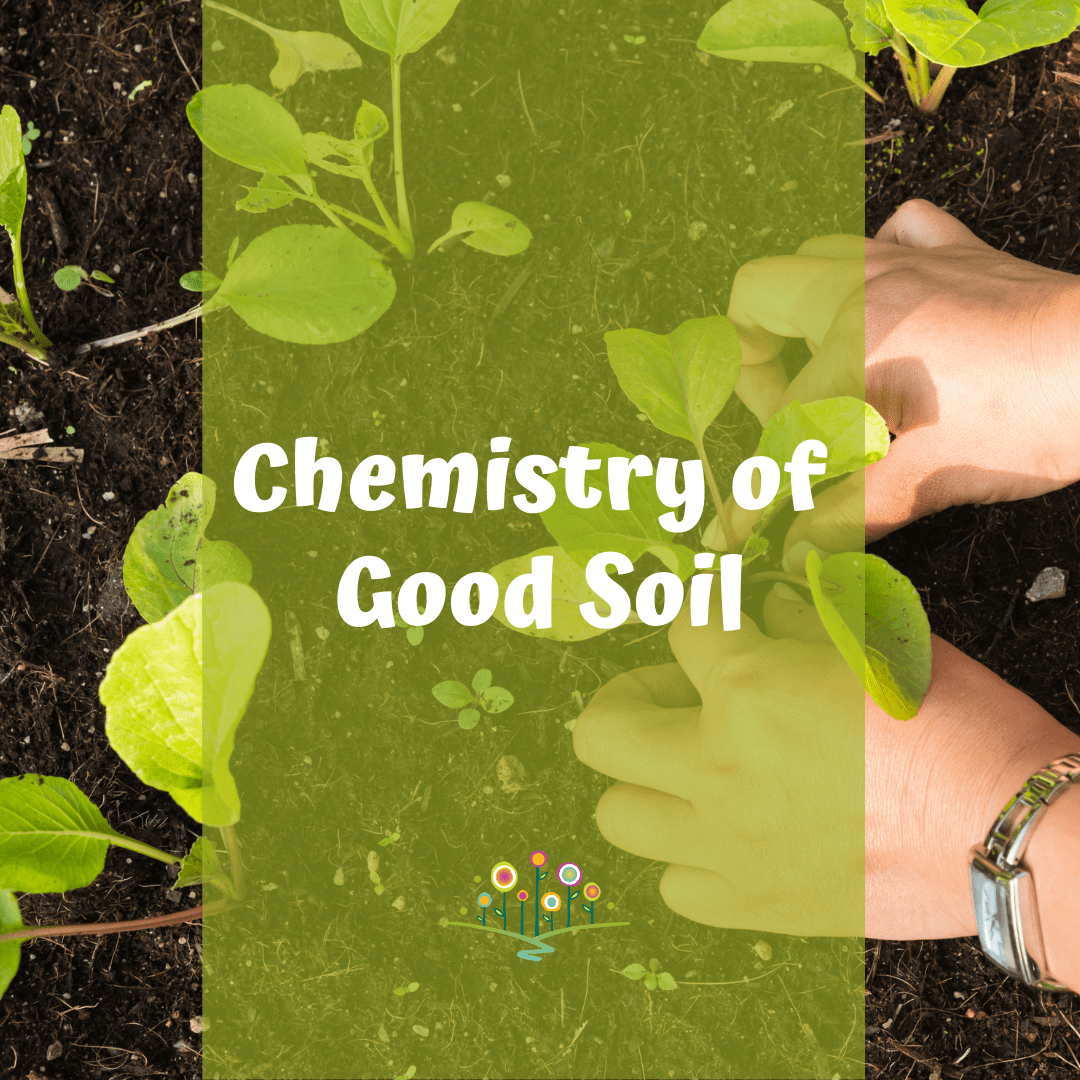
Soil is more than just the dirt for your plants. It’s the foundation for their growth and overall health. Do you know what makes up the chemistry of good soil?
To create the most ideal growing conditions for your garden, you need good soil. It is, quite literally, the foundation of your plants’ growth.
First, to insure your soil’s optimal condition, perform a test to measure its type, PH, and nutrients. This can be done affordably by sending a sample to your local county extension office, or by performing a DIY test at home. Once you have your results, you’re ready to refine your soil so that it’s perfect for your plants.
Texture
Soils are made up of three different texture components: sand, silt, and clay. Each is a different type and size of rock particle with varying properties.
- Sand (large) is heavy and retains heat. Water and nutrients drain quickly through sand. And it provides good aeration, too.
- Silt (medium) has a floury texture and effectively holds in water and nutrients. Its properties typically lie between that of sand and clay.
- Clay (small) is very fine and becomes compacted when wet and under pressure. Water and nutrients are slow to drain or to be absorbed.
Each of these particles offer valuable traits that, when mixed together, create optimal soil. The goal is to reach garden “loam”, a perfectly balanced combination of all three types.
Loamy soil effectively holds moisture and allows nutrients to be absorbed, while also providing adequate levels of drainage. Oxygen is able to reach the plant’s roots, and the texture is neither too clumpy nor too thin, which makes it easy to work with.
Adding amendments such as leaf mold, coconut coir, fine bark, and organic compost can improve the structure of your soil.
Nutrients
To effectively grow healthy plants, they need the proper nutrients. The three primary macronutrients plants acquire from soil are nitrogen, phosphorus, and potassium.
- Nitrogen (N) supports strong, leafy green vegetative growth. It’s most beneficial for lettuce, herbs, broccoli, and other deep green plants.
- Phosphorus (P) promotes early plant growth, helping with root and stem formation and the development of fruits and seeds. It’s most beneficial for cucumbers, peppers, squash, tomatoes, and other edible flowering plants.
- Potassium (K) helps plants develop immunity and disease resistance as they grow, encouraging root strength and the ripening of fruit. It’s most beneficial for carrots, radishes, turnips, onions, garlic, and other root vegetables.
Soils are usually labeled with an N-P-K ratio to determine the percentages of each nutrient per pound. Depending on what you’re planning to grow, you should choose a soil with the proper ratio of each nutrient. If you don’t have specific needs, a 5-5-5 is an all-purpose fertilizer.
Secondary macronutrients that are beneficial for plant growth in smaller quantities include: magnesium, calcium, and sulfur. These produce chlorophyll to absorb energy, strengthen cell walls, and improve the plant’s overall structure. They also form amino acids, proteins, and oils.
Adding amendments such as cover crops, compost, leaf mold, or manure can also add essential nutrients to your soil.
pH Levels
The pH level of soil (the range of acidity to alkalinity) is key for creating an ideal growing environment for plants while ensuring they receive essential nutrients. According to Almanac, “a pH of 6.5 is just about right for most home gardens, since most plants thrive in the 6.0 to 7.0 (slightly acidic to neutral) range.”
It’s important to note, however, that more acidic or alkaline soil can be better suited for different types of plants, so it’s beneficial to research the ideal range for your garden before you start. The wrong soil pH level can negatively impact how plants absorb nutrients and may affect their growth and overall health.
Adding amendments such as compost, limestone, sulfur, wood ash, or gypsum regulates your soil’s pH levels to the appropriate level.
If you need some help getting your soil just right, visit our greenhouse and chat with the experts.
To see what’s springing up around the greenhouse, sign up for our newsletter.



